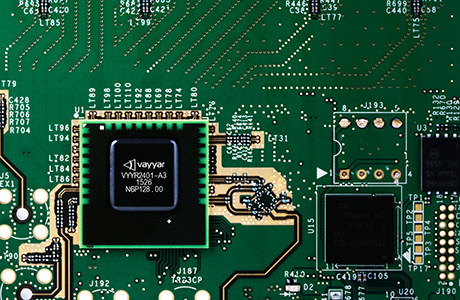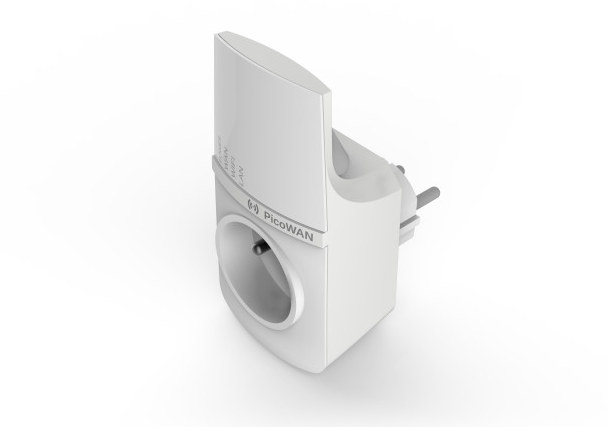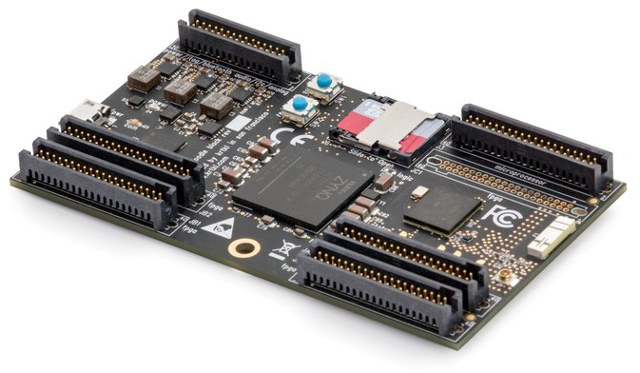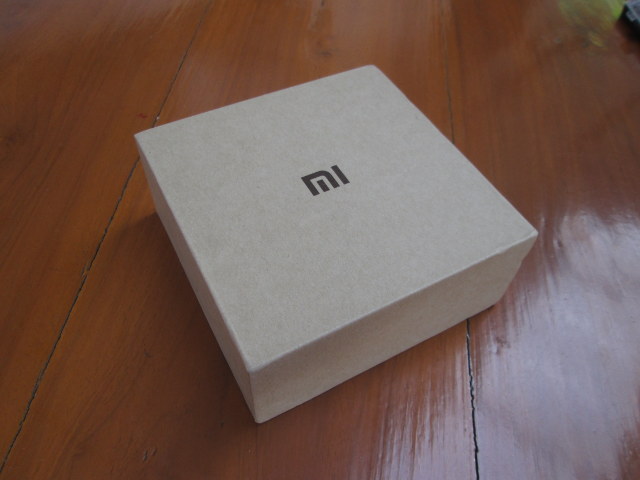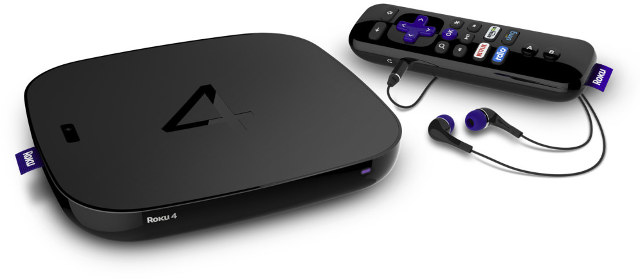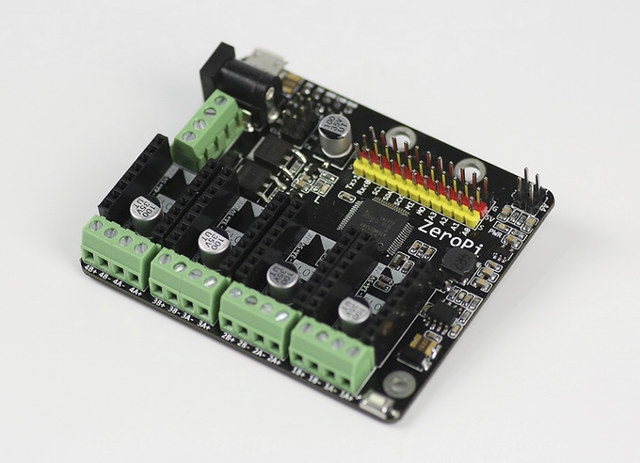A few days ago, I wrote about Orbbec Astra 3D camera that can analyze distance and depth to form a 3D image of object. However, this solution uses an IR sensors, and while it can fulfill the needs of many application it does not allow to see through object, and that’s exactly what Walabot wideband MIMO radar board promises to do thanks to Vayyar 3D imaging sensor and a dozen of RF antennas. Some of the key features and preliminary specifications of Walabot board include: Vayyar VYYR2401 3D imaging sensor 12 (or is it 14?) non-contact antennas array system based on “Octopus A3 System on chip” Build in Tx/Rx linear polarized wide-band antennas from 3-10Ghz. On-board Cypress FX3 controller for communication and pre-processing EEPROM (for inventory and calibration information) Walabot interface connectors: Micro-USB 2.0 for high-rate data communication. Option to provide supply from USB. Single supply voltage 4.5-5.5v input for […]
FLIF Lossless Image Format Claims to Outperform PNG, JPEG2000, WebP, and BPG
FLIF, which stands for Free Lossless Image Format, is a new lossless image format that is said to provide better compression ration than PNG, lossless JPEG2000, lossless WebP, and lossless BPG for all king of images including medical images, geographical maps, cliparts and so on. Beside being lossless, FLIF is also progressive, so a lower quality version of the image can be displayed early while the download is still in progress. The developer has uploaded a video comparing how a PNG image and FLIF image would load in a slow network. Other FLIF features include: Lossless compression Greyscale, RGB, RGBA Up to 16 bits color depth per channel (high dynamic range) Interlaced (default) or non-interlaced Animation support “Encoding and decoding speeds are not blazingly fast, but they are in the right ballpark” Based on MANIAC (Meta-Adaptive Near-zero Integer Arithmetic Coding) algorithm developed by Jon Sneyers and Pieter Wuille. (However details […]
Archos Introduces Free PicoWAN IoT Gateway, Costing 75 Cents Per Year Per Connected Device
The Internet of Things is promising billions of connected devices in the next few years, and while devices at home can usually connect through your broadband connection at no extra cost, devices on the field may need to use cellular connectivity and cheap 2G network are being phased out by Telcos. Weightless, operating over white space frequencies, is one of several solutions proposed to connect IoT objects over longer distances, but Archos has their own project with PicoWAN pico-gateways using LoRa(WAN) protocol which allows for several kilometers range. PicoWAN would plug into your wall socket, connect to your broadband network over WiFI and offer connectivity to various “things” over LoRa. Creating a cellular network is expensive, due to the costs of base stations, but PicoWAN is so cheap, 100 times cheap than traditional base stations, that Archos plans to giveaway 200,000 gateways across Europe to create an IoT network. That […]
Snickerdoodle Xilinx Zynq ARM + FPGA Board Starts at $55 (Crowdfunding)
While Xilinx Zynq UltraScale+ ARMv8 + FPGA SoC is still in development, there are already quite a few Xilinx Zynq-7000 boards on the market today. The cheapest I know of is MYirTech Z-Turn board selling for $99, but krtkl (pronounced “critical“), US a based startup, will soon bring an even cheaper Zynq-7010/7020 board with their Snickerdoodle board currently listed on CrowdSupply platform for $55 and up, plus shipping. Snickerdoodle board specifications: SoC Xilinx Zynq-7010 dual core Cortex A9 processor @ 667 MHz + FPGA with 430K gates or Xilinx Zynq-7020 dual core Cortex A9 processor @ 866 MHz + FPGA with 1.3million gates (~430K ASIC gates) System Memory – 512MB or 1GB LPDDR2-800 Storage – micro SD card slot, 16MB boot flash Connectivity via Ti Wilink 8 solution 2.4GHz 802.11 b/g/n WiFi + Bluetooth 4.0 or Dual band 802.11 b/g/n WiFi (2×2 MIMO) + Bluetooth 4.0 USB – 1x micro USB port […]
Xiaomi Mi Smart Remote Center Review
Xiaomi Mi Smart Remote Center is a tiny box with WiFi connectivity and IR transmitters that is used to control infrared enabled devices such as TVs, medai players, air conditioners and more with your Android smartphone. The good thing is that it only costs $20, so I asked GearBest to send a sample to check it out, which they did. I’ll start this review by checking out the hardware, before running MiHome app to control a television and air conditioner. Xiaomi Mi Smart Remote Center Unboxing and Teardown The package is just a cardboard box with Mi logo. Once you open the page there’s a sticker with the QR core redirecting to MiHome app. You can peel it off, and take the box out of the package, where you’ll also find a USB to micro USB cable for power, and a user’s manual in Chinese only. To open the device […]
Roku 4 Media Player Supports H.265 and VP9 4K Videos, 7.1 Channel Audio Pass-through
Roku has announced the latest version of their video streaming player. Roku 4 comes with a faster quad core processor, supports H.265 & VP9 video playback up to respectively 2160p60 and 2160p30, and includes a new version of Roku operating systems. Roku 4 specifications: SoC – Unnamed Quad core ARM processor with OpenGL ES 2.0 capable GPU System Memory – 1.5GB RAM Storage – TBD internal storage – micro SD slot Video Output – HDMI 2.0 up to 3840×2160 @ 60Hz with HDCP 2.2 support Audio Output – HDMI or optical S/PDIF with support for Dolby Digital Plus 7.1 surround pass-through Video Codecs – 4K UHD 60 fps HEVC Playback, 4K UHD 30 fps VP9 Playback (YouTube) Connectivity – 802.11ac MIMO dual-band wireless, 10/100 Base-T Ethernet USB – USB host port Power supply – 12V/1A Power consumption – 12.4W (typ.) when streaming 4K UHD video Dimensions – About 16.5 x […]
Google Releases Android 6.0 Source Code and Factory Images for Nexus Devices
Google has pushed Android 6.0 source code to AOSP (Android Open Source Project), and released factory images (MRA58K) for Nexus 6 & Nexus 5 smartphones, Nexus Player, as well as Nexus 9 and Nexus 7 (2013) tablets. You can retrieve the code with the usual repo tool:
|
1 2 |
repo init -u https://android.googlesource.com/platform/manifest -b android-6.0.0_r1 repo sync |
Some of keys changes are listed on Android Source microsite and include Doze and App Standby to save battery, new authentication interface sich as Fingerprint, Gatekeeper, and Keymaster, adoptable storage, Bluetooth stylus support, and more. If you want a more detailed changelog at the source code, Opersys got you covered by listing all differences between 5.1.1_r24 (LMY48W) to 6.0.0_r1 (MRA58K) with newly added components, removed components, and modified components. Jean-Luc Aufranc (CNXSoft)Jean-Luc started CNX Software in 2010 as a part-time endeavor, before quitting his job as a software engineering manager, and starting to write daily news, and reviews full time later in […]
ZeroPi is an Arduino & Raspberry Pi Compatible Motor Control Board (Crowdfunding)
Pi boards keep on coming… As soon as I finished writing about Roseapple Pi board, yet another one popped out on my twitter feed… But that one is of a different kind, as it won’t run Linux, but instead the board is powered by an Atmel SAMD21 Cortex M0+ micro-controller, and can support lots of electric motors including up to 11 micro servos and 8 DC motors – or 4 stepper motors – simultaneously. ZeroPi board specifications: MCU – Atmel SAMD21J18 ARM Cortex M0+ @ 48 MHz with 32 SRAM and 256KB flash I/O pins via 33-pin header, 4-pin temperature sensor, and 10-pin Raspberry Pi header 35 GPIOs 4x 12-bit ADC channels 1x 10-bit DAC 2x UART 2-channel temperature sensor interface DC current per I/O pin- 7mA DC / Stepper Motor control – 4x 4-channel SLOT interface compatible with common parts such as DRV8825 or A4988 Stepper motor driver and […]


